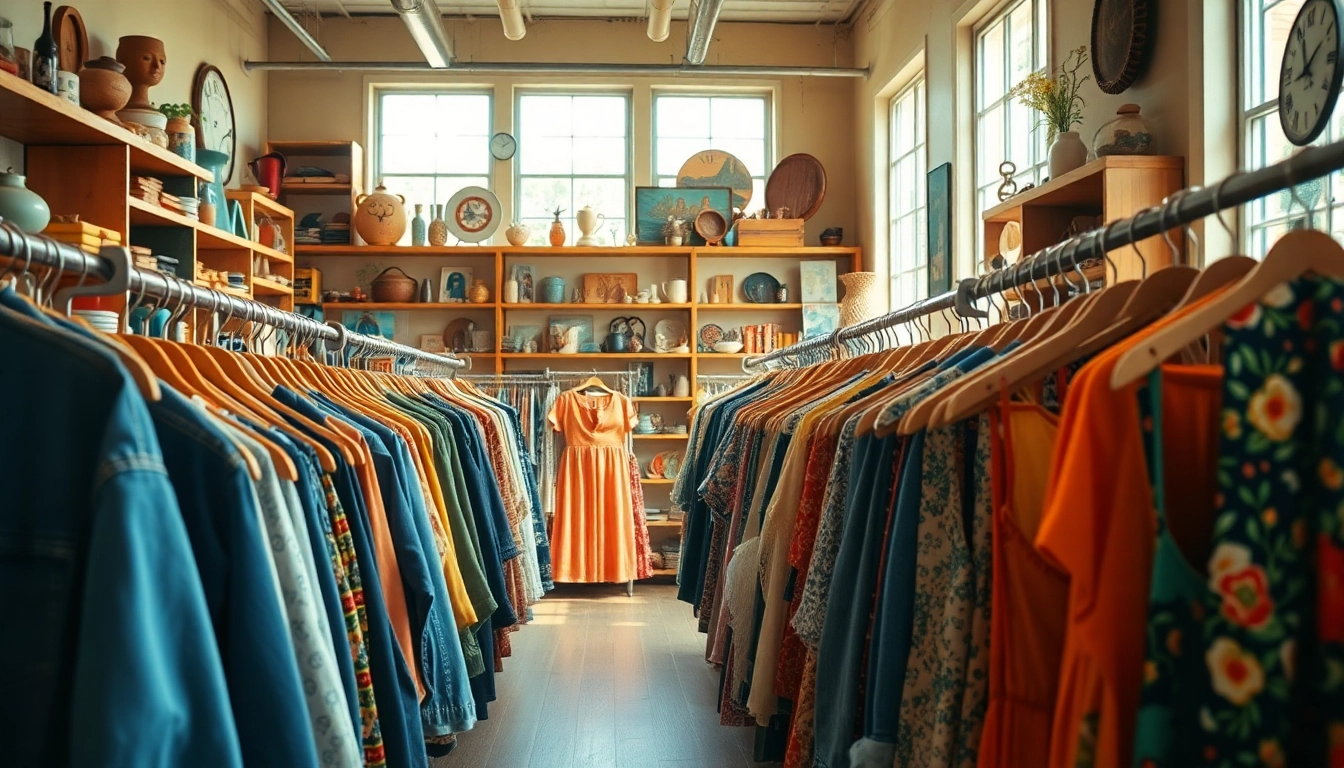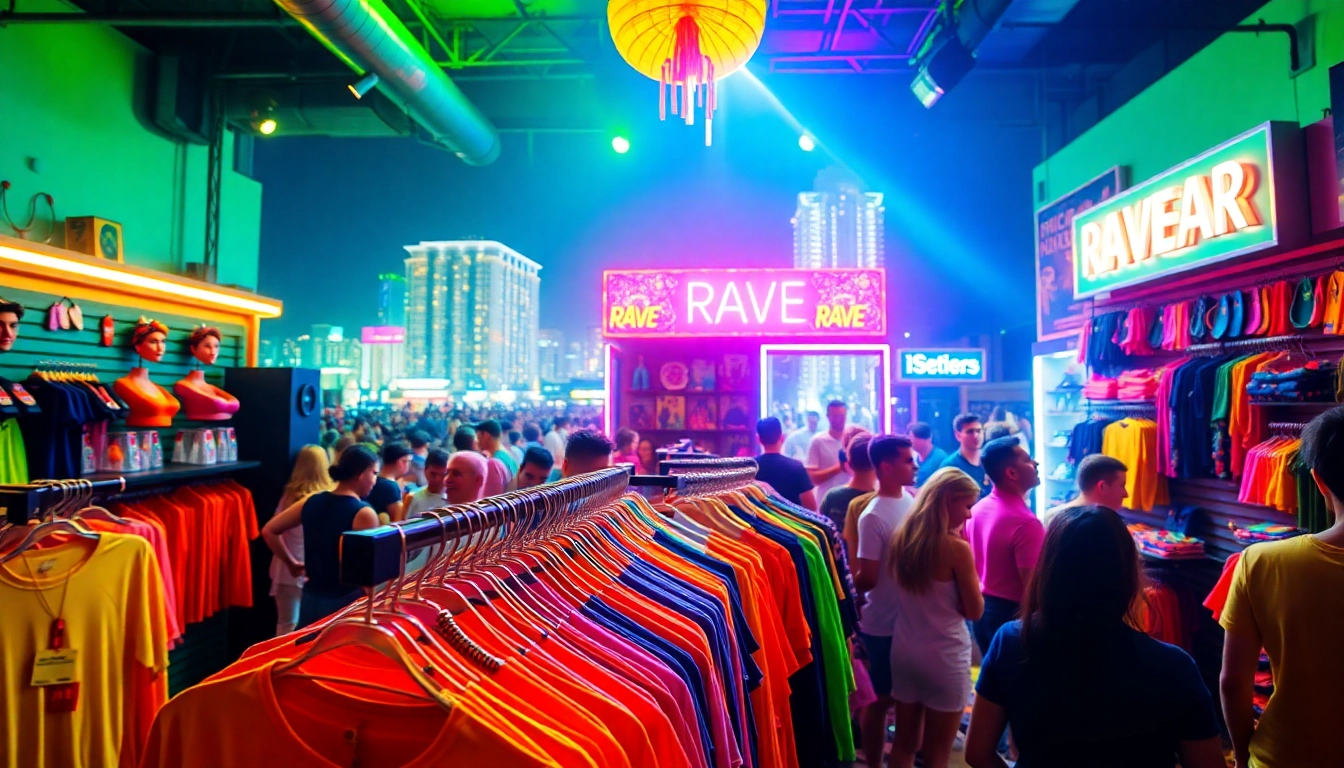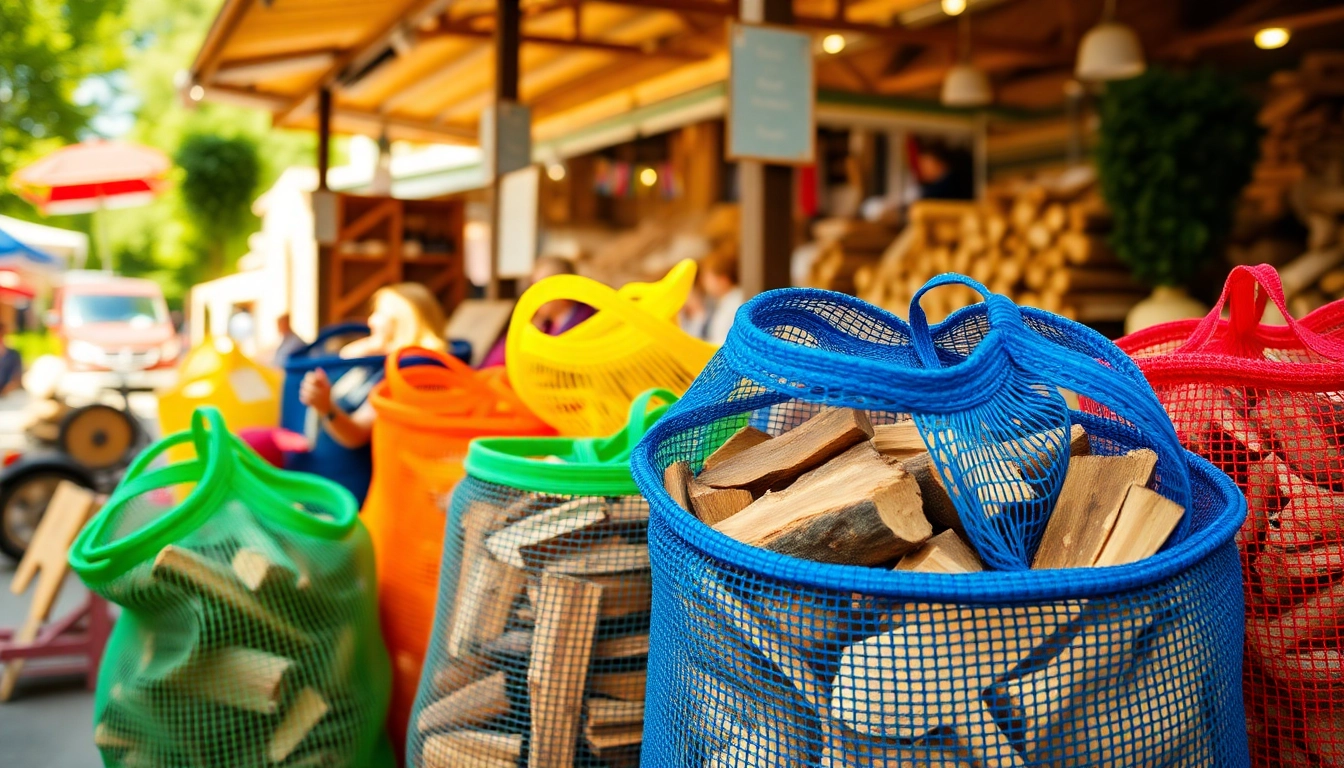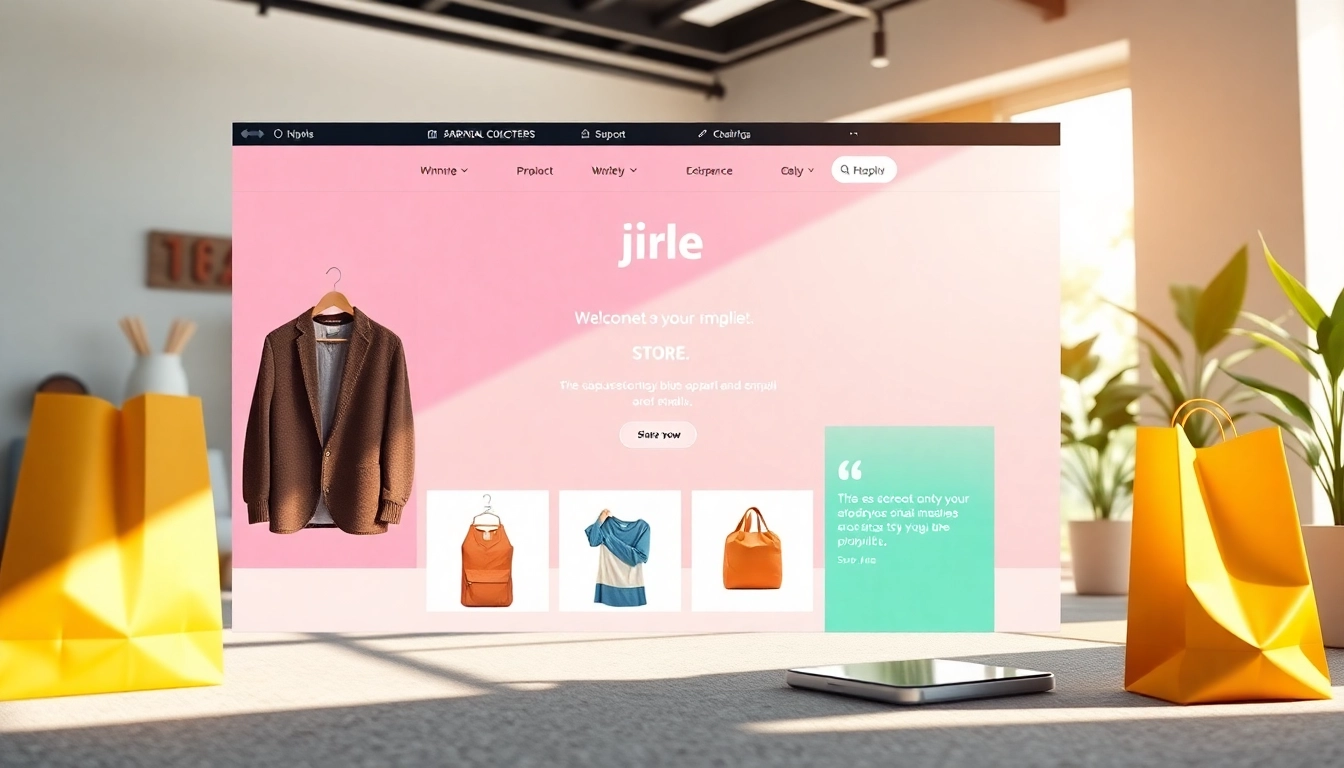Understanding the Thrift Store Concept
What Defines a Thrift Store?
A thrift store is a retail establishment that sells secondhand goods, an eclectic mix of items ranging from clothing and household wares to furniture and electronics. These stores often operate on a nonprofit basis and rely on donations from individuals and organizations. Unlike traditional retail establishments, thrift stores provide a platform for sustainable shopping practices, allowing items to be reused and reducing waste in landfills. The unique charm of a thrift store lies in the variety of items available, often including rare or vintage finds that can’t be found in standard retail environments.
The Benefits of Shopping at a Thrift Store
Shopping at a thrift store comes with multiple benefits that appeal to diverse consumer groups. One of the primary advantages is affordability; thrift stores typically offer items at a fraction of the retail price. This makes them highly attractive to budget-conscious shoppers. Moreover, many thrift stores channel their profits back into community programs and charities, allowing consumers to make purchases that contribute positively to their local area.
Additionally, thrift stores play a significant role in promoting sustainability. By purchasing pre-loved items, consumers help reduce the demand for new production, thereby lowering resource consumption and environmental impact. The thrill of the hunt also adds to the charm, creating a sense of discovery and possibility with each visit.
Common Misconceptions about Thrift Stores
Despite their growing popularity, thrift stores are often viewed with skepticism. A prevalent misconception is that the items available are of poor quality or undesirable. In reality, many thrift stores sell high-quality clothing and merchandise that are still in excellent condition. Another myth is that thrift stores are chaotic and unorganized. While the inventory can indeed be diverse and eclectic, many thrift stores implement organized layouts that make shopping enjoyable.
Some shoppers also think that thrift stores are only for those in financial need. However, a wide array of consumers visit thrift stores for various reasons, including vintage hunting, sustainable shopping, and treasure seeking. Understanding these truths can empower consumers to embrace the thrift store experience fully.
Top Reasons to Shop at a Thrift Store
Affordability and Variety of Clothing
One of the primary attractions of thrift stores is the affordability of the clothing available. Consumers can find high-quality, branded clothing at a fraction of the original retail price. For instance, a pair of high-end jeans that might sell for $100 in a department store can often be found in a thrift store for $10 or less. This significant saving encourages more people to explore thrift shopping as a viable alternative to conventional retail.
The variety available in thrift stores also adds to their appeal. Shoppers might encounter anything from contemporary fashion labels to vintage pieces that tell a story. This diversity allows individuals to curate a unique wardrobe that stands out, moving away from mass-produced clothing often available in chain stores.
Environmental Impact and Sustainability
The environmental benefits of thrift shopping cannot be overstated. Every item purchased from a thrift store represents a step away from fast fashion and single-use consumerism. By choosing secondhand items, consumers can significantly reduce waste and the ecological footprint associated with new garment production. This shift not only helps combat the textile waste crisis but also encourages sustainable practices within communities.
Many thrift stores also work in conjunction with recycling initiatives, ensuring that items that cannot be sold are repurposed or responsibly disposed of, rather than ending up in landfills. This reinforces the positive environmental impact associated with thrift shopping.
Support Local Communities and Charities
Many thrift stores operate as non-profit organizations, using their revenue to fund local charities, community programs, and social services. By shopping at these stores, consumers contribute directly to meaningful causes, whether through funding educational programs, youth services, or healthcare initiatives.
When supporting a thrift store, shoppers are often investing in their own local economy, helping to strengthen community ties and provide resources needed for improvement. This sense of community support can be rewarding for consumers, making their shopping experience feel more impactful.
Tips for a Successful Thrift Store Shopping Experience
How to Navigate the Store Efficiently
To make the most of your thrift shopping experience, it’s important to approach your visit with a plan. Start by familiarizing yourself with the layout of the store. Many thrift stores categorize their items, making it easier to find what you need.
Consider shopping during off-peak hours when the store is less crowded. This allows for a more leisurely experience and gives you ample time to explore without pressure. Be prepared to sift through items, as treasures can often be hidden among clutter.
Essentials to Look for While Browsing
When browsing through a thrift store, certain essentials should catch your eye. Look for items that are well-constructed and made from high-quality materials. For clothing, examine seams, zippers, and tags to assess quality.
Ultimately, be on the lookout for unique items that resonate with your personal style. These could be bold statement pieces or subtle accessories that bring your outfit together. Trust your instincts—if it speaks to you, it’s worth considering.
Maximizing Your Thrift Store Finds
After finding great items, you can maximize your thrift store finds by considering DIY alterations or upcycling projects. Altering a garment, such as resizing or adding embellishments, can elevate your thrifted clothing to match current trends.
Additionally, learn to layer and mix textures when styling thrifted pieces. This creates a visually interesting outfit while providing an opportunity to showcase your creativity. Thrift shopping encourages exploration, so don’t hesitate to try out new items and styles!
Transforming Thrift Store Items into Fashion Statements
Creative Upcycling Ideas for Vintage Clothes
Upcycling refers to the process of repurposing old items into something new and functional. Embrace creativity when dealing with thrifted clothing by considering ways to transform pieces into modern fashion statements. Ideas include turning oversized vintage shirts into trendy crop tops or creating a new denim jacket from patched jeans.
Incorporating art, beads, or fabric paint can also personalize your items, ensuring that they represent your unique style. The extensive range of thrift store items paired with a bit of imagination can result in beautiful fashion transformations.
The Art of Mixing High and Low Fashion
Combining thrifted pieces with high-end fashion creates an interesting aesthetic that is both stylish and budget-friendly. For example, pairing a designer handbag with secondhand jeans elevates your overall look without breaking the bank. This mixing of high and low fashion empowers shoppers to redefine their style and create unique outfits that garner attention.
Don’t shy away from contrasting textures or styles; instead, view them as opportunities to express personal creativity. This art form not only promotes thrift shopping but also showcases individual fashion preferences.
Accessorizing with Thrifted Treasures
Accessories can dramatically change an outfit’s impact, and thrift stores often house a treasure trove of jewelry, handbags, and decorative pieces. Seek out bold jewelry that can serve as a conversation starter or vintage bags that add character to any ensemble.
Incorporating thrifted accessories not only enhances your style but allows you to support sustainable fashion practices. A unique accessory can make an everyday outfit stand out, proving that small details often make the biggest difference.
Connecting with the Thrift Store Community
Finding Local Thrift Store Events and Activities
Many thrift stores host community events, such as swap meets, fashion shows, or workshops centered around sustainability and upcycling. Engaging with these events can elevate your thrift shopping experience while allowing connections with like-minded individuals. Check local listings or social media pages to find out what’s happening in your area.
The Role of Online Thrift Communities
In the digital age, online thrift communities have blossomed. Social media platforms allow thrift lovers to share their finds, exchange tips, and even sell their own thrifted discoveries. Participate in these online communities by following thrift shop hashtags, engaging in forums, and joining local groups.
Connecting with others who share a passion for thrift shopping can provide newfound inspiration and knowledge, enriching your thrift experience.
Sharing Your Thrift Finds on Social Media
As you embark on your thrift shopping journey, don’t forget to document and share your unique finds on social media. Showcase creative outfits, DIY projects, or even a thrifting haul. Use relevant hashtags to reach a wider audience and inspire others to explore thrift shopping.
Sharing your experiences allows for the exchange of ideas and might even spark conversations that lead to new friendships, solidifying your connection to the thrift store community.














Leave a Reply